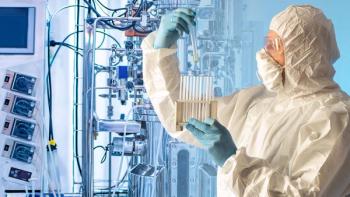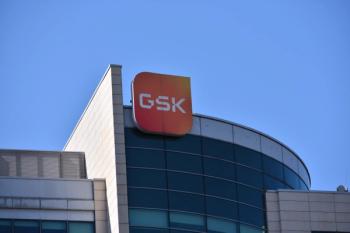
- BioPharm International-04-01-2014
- Volume 27
- Issue 4
Biopharma Outsourcing Activities Update
Outsourcing activity remains strong and unlikely to abate, especially in more traditional areas.
Over the past 11 years, BioPlan’s annual report and survey of biopharmaceutical manufacturing has noted a shift in outsourcing to a more strategic calculus involving activities some had previously considered too core to outsource. At the same time, data have, not surprisingly, illustrated that outsourcing tends to be dominated by lower-value activities, these being the easiest for facilities to gain comfort in handing off to partners. So essentially, this year BioPlan found something of a bimodal trend, more complex process outsourcing and greater outsourcing volume of basic bioprocessing, such as fill-finish, and other activities.
With the release of the 11th Annual Report and Survey of Biopharmaceutical Manufacturing Capacity and Production,BioPlan reviews the responses from nearly 250 biopharmaceutical manufacturers and their perspective on, among many other aspects in bioprocessing, the landscape of outsourcing activity. The sample size is large enough to shape a view of the top activities being outsourced and what this year might hold.
Most commonly outsourced activities
Results from BioPlan’s 2014 study’s preliminary data indicate that—as with the past two years—the most commonly outsourced activity is analytical testing of bioassays, by about 9 in 10 respondents to date. Following that is toxicity testing, which is being outsourced to some extent by 86.8% of respondents so far. Fill/finish operations are also being outsourced by more than 8 in 10 respondents (80.2%), while validation services (76.9%) rounds out the top four.
On the other end of the spectrum, design of experiments (DoE) (34.1%), downstream process development (36.3%), and quality-by-design (QbD) services (37.4%) are the least likely to be outsourced, although at minimum about one-third of the industry appears to be outsourcing at least some degree of these activities.
If current trends hold, these results would in some cases mark a significant departure from 2013 rankings (1). Relative to other activities, for example, this year’s results suggest that toxicity testing and fill/finish operations are moving up the outsourcing popularity ranks (see Figure 1).
More interestingly, the results suggest that compared to last year, the most popular activities are being increasingly outsourced, while there has been a retrenchment in the proportion of the industry that is outsourcing less common activities. We find that, of the top six activities being outsourced this year, four are being outsourced to greater degrees than last year. Virtually all of the others, however, are being outsourced by fewer biopharma respondents this year.
The following are some notable changes found in this year’s study:
- Fill/finish operations (80.2% outsourcing this year, versus 70.4% in 2013)
- GMP training (51.6% this year, down from 65.4% in 2013)
- Regulatory services (48.4% this year, down from 59.3% in 2013)
- Downstream production operations (39.6% this year, down from 51.9% in 2013).
This year’s results more closely resemble the figures seen in 2012, with last year’s data mostly a big step up from 2012. That may be simply a reflection of sample variance, or it may be that some of those that considered outsourcing new activities last year have pulled back from them this year.
Industry plans more outsourcing
Whatever the reason(s) for the apparent reining in of specific outsourcing in 2014, there doesn’t seem to have been a concurrent pull back in planned levels of future outsourcing activity. Instead, across the vast majority of activities identified, a larger proportion of respondents this year said they were planning to outsource the activities to “significantly higher levels” in the coming two years.
These planned expansions of outsourcing aren’t only limited to lower-value activities, either. A sampling of the results from respondents thus far note that:
- 32.3% plan to outsource analytical testing of bioassays at significantly higher levels in the next two years (versus 25.8% last year)
- 25.8% plan to significantly hike the level of outsourcing of fill/finish operations (up from 19.4% last year)
- 14.1% expect to significantly increase their outsourcing of upstream (from 3.2% last year) production operations and 14.5% will increase their outsourced lot-release testing (up from 1.6%).
The only area in which significantly fewer respondents this year plan increases in outsourcing activity is project management services. In 2014, only 3.1% of respondents-to-date said they would be outsourcing project management services at a greater level in two years. Last year, 8.1% felt that this would be the case.
Industry outsourcing more than ever
This year, if respondents follow through on their outsourcing plans, an even more influential dimension in the biopharmaceutical manufacturing industry can be expected. And there are signs that this might already be the case.
That’s because the data concerning the “popularity” of outsourcing (e.g., the percentage of respondents outsourcing various activities to some degree) mask another important measure: The estimated percentage of each activity that is being outsourced. And on this metric, certain aspects of outsourcing don’t seem to have slowed at all.
When the percentage of the various activities being outsourced today is estimated, approximately half are being outsourced at greater levels this year than in 2013. Some of the more notable increases follow:
- On average, respondents-to-date are outsourcing an estimated 38.5% of their fill/finish operations, up from 31.8% last year and the highest level in at least five years.
- Facilities appear to be outsourcing more than one-third (35%) of their toxicity testing activities, up from 28.5% in 2013 and representing the third consecutive year of increases.
- Responses show that 15.5% of cell-line development activities are being outsourced, up from 10.9% last year.
- Facilities are outsourcing approximately 10% of their DoE activities, up from just 3.8% a couple of years ago.
Conclusion
Preliminary study data suggest that outsourcing activity remains strong and unlikely to abate, especially in more traditional areas. A pullback in the proportion of respondents indicating some degree of outsourcing—coupled with an increase in estimated levels of outsourcing—suggests that those facilities that are outsourcing activities are doing so at higher levels this year. This increased outsourcing is also the case for areas such as cell line development and downstream process development.
Moreover, expectations surrounding future levels of outsourcing activity remain high. And while the data indicate that few bioprocessing activities are exclusively outsourced by the industry, even this could change. For many in the biopharmaceutical manufacturing industry, outsourcing continues to be a core part of their strategy. There is little to suggest, if the results from the BioPlan study so far hold true, that this appetite for outsourcing non-core operations will decrease over the coming year.
Reference
1. BioPlan Associates,
About the Author
Eric Langer is president of BioPlan Associates, tel. 301.921.5979,
Articles in this issue
over 11 years ago
Line of Environmental Measurement Productsover 11 years ago
UPLC Separation Intergrates into Mass Spectrometersover 11 years ago
FDA and Manufacturers Seek a More Secure Drug Supply Chainover 11 years ago
High-Performance Separation-Electrospray Ionization Systemover 11 years ago
Biotech IPOs on a Hot Streakover 11 years ago
Global Instability Affects the Pharma Market in Brazilover 11 years ago
Raw Material Variabilityover 11 years ago
Monoclonal Antibodies Key to Unlocking the Biosimilars Marketover 11 years ago
Publishing Beyond the Printed PageNewsletter
Stay at the forefront of biopharmaceutical innovation—subscribe to BioPharm International for expert insights on drug development, manufacturing, compliance, and more.




